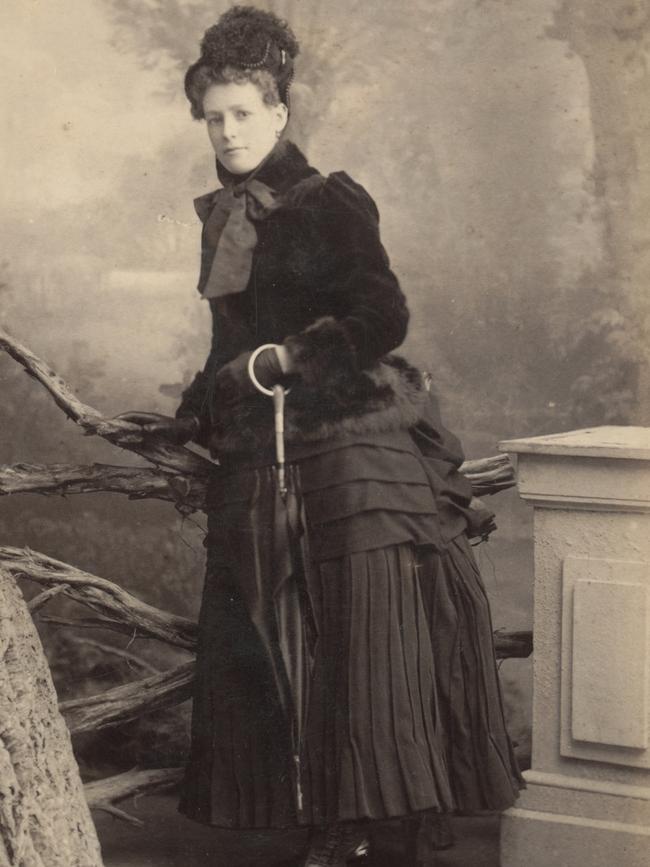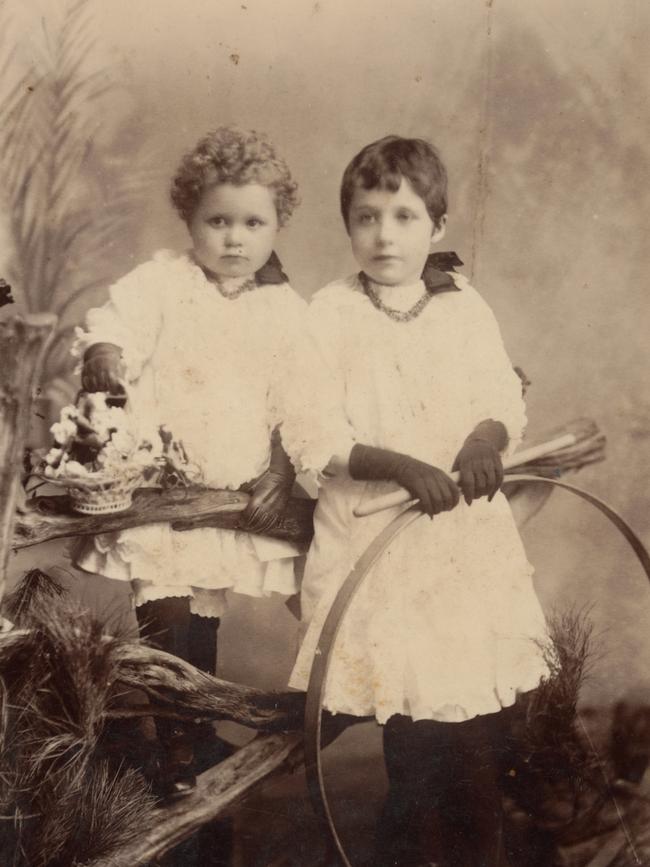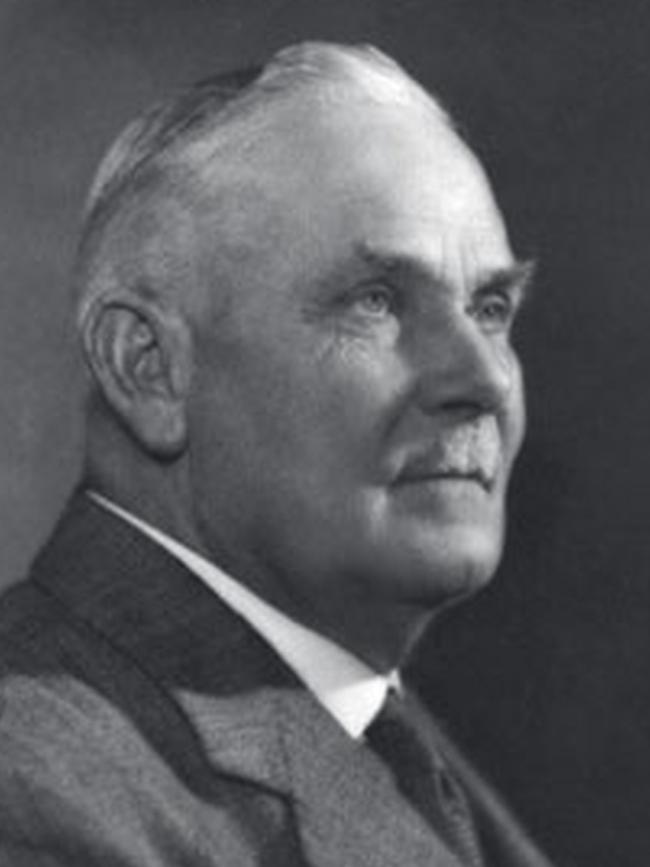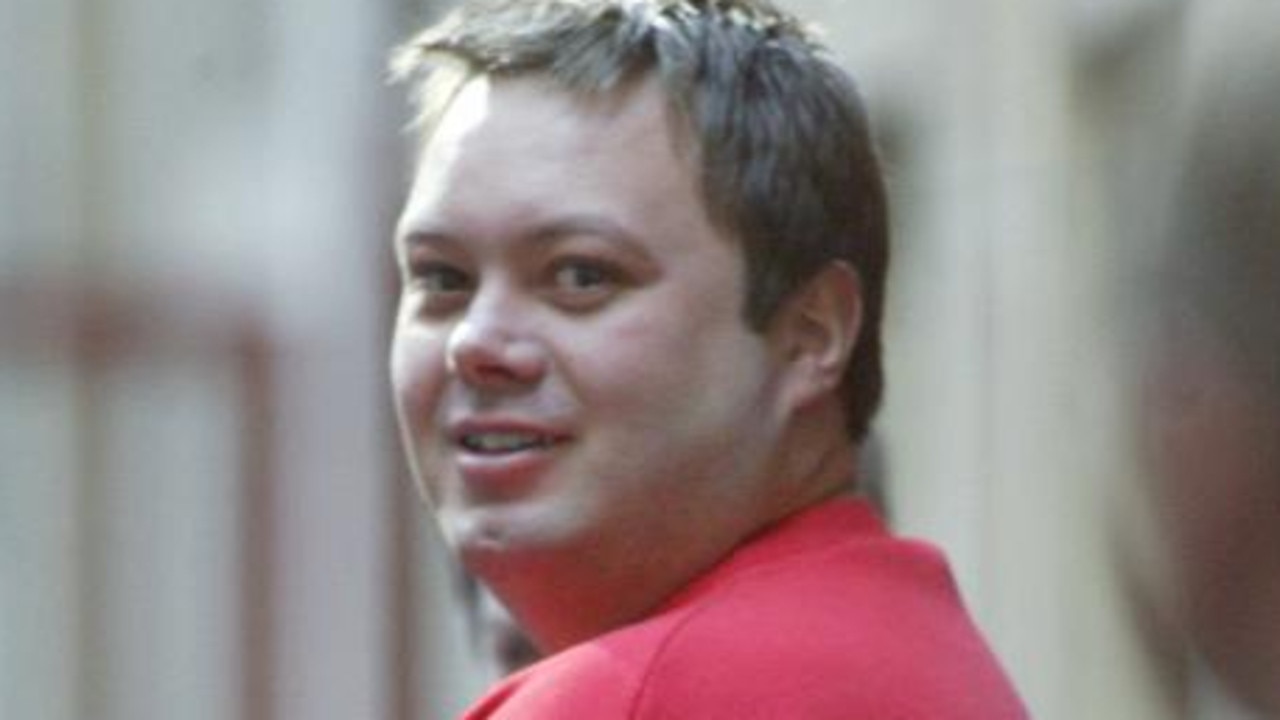South Australian black widow who poisoned her way into folklore
It was called Rough On Rats, a 19th century rodent poison that was little more than a box of arsenic coloured with coal — but for SA’s infamous black widow, Martha Needle, it was the tool she used to murder the people she was supposed to love most.

Our Criminal History
Don't miss out on the headlines from Our Criminal History. Followed categories will be added to My News.
It was called Rough On Rats, a 19th century rodent poison that was little more than a box of arsenic coloured with coal.
Such was its reputation as a weapon of murder that chemists made their customers sign a purchase book, and each signature needed an independent witness. But Martha Needle found a way to stockpile boxes of Rough on Rats, “chemist shopping” her way around the neighbourhood and finding different people to sign for her purchases.
Needles didn’t have a rat problem though. Her problems were much more serious. Post-traumatic stress, severe mental illness, probably a drug addiction.
The South Australian woman used her Rough on Rats to kill not pests but the people she was supposed to love the most.

By the time she was hung in 1894, one husband, two children and her fiance’s brother were dead at her hand, and another man had narrowly escaped with his life.
She became known around the globe as the Black Widow, a heartless killer who broke the sacred bonds of motherhood and murdered her own children.
According to Adelaide author and academic Samantha Battams, the woman behind new book The Secret Art of Poisoning, the real story is far more nuanced and complicated than the headlines that appeared in the tabloids of the day.
For Battams, the Martha Needle story is one of a little girl who grew up neglected and abused with an alcoholic mother and evil stepfather. It is the story of a woman who eventually paid for the sins of those who were supposed to raise her by hanging by the neck.
And, bizarrely, it’s the story of how this history of abuse echoed through the generations and produced another murderous poisoner.
■ ■ ■
For Battams, the story started when she was researching the life of South Australian aviator Harry Butler for another book.
While reading old newspaper clippings about the return of the famous Smith brothers, who landed at Butler’s airport north of Adelaide, she was distracted by another story — one even more prominent than that written about the aviation heroes.
It was the story of Alexander Newland Lee, a shearer and railway worker from the town of tiny Rhynie in the Claire Valley, between Tarlee and Auburn.

In a case known as The Rhynie Tragedy, Lee was said to have been deeply depressed after injuring his hand.
Unable to work, he was dependent on his brother for money.
He’d also fallen in love with a German-Australian nurse who had been treating him in the hospital — a situation greatly complicated by the fact he already had a wife and children.
Using strychnine, Lee killed three of his seven children and his wife.
It was a scandal on a grand scale, and Lee was found guilty on July 15, 1920, and sentenced to death.
Despite numerous letters of protest to Adelaide newspapers, and even the threat of a union strike, Lee was hanged at the Adelaide Gaol.
He was 31 years old.
Compelled to look deeper at the story, Battams made a startling discovery.
Alexander Lee was the nephew of none other than Martha Needle, who used poison to kill members of her own family and was also hanged at the age of 31.
Intrigued, Battams dug deeper still.
The story she uncovered is both tragic and astounding.
■ ■ ■
Martha Needle was born Martha Kenedy at Murbko in the Murray Mallee on April 9, 1863.
Growing up she was also known as Martha Charles and Martha Foran, a testament perhaps to how fractured and unsettled her childhood was.
Her mother Mary was a poor Scottish immigrant, immigrating from the Orkney Islands where she was working as a farm servant at just 16 years of age.

But despite the newspaper stories of Australia’s eternal sunshine and abundant work, Mary’s life in South Australia was anything but happy.
She married Englishman Joseph Charles at the Scottish settlement of Inverbrackie in the Adelaide Hills and the couple went to work at Anlaby sheep station.
They had a number of children, but when Mary was pregnant with Martha, Joseph abandoned the family.
Now with child, Mary, unable to cope on her own, also abandoned the children.
The pregnant Mary teamed up with Irishman Daniel Foran, an army deserter who never accepted Martha as his own.
In fact, according to court records, he physically and emotionally abused young Martha.
The family then moved to Eyre Peninsula, living at Lake Hamilton, Bramfield, Little Swamp and Port Lincoln.
Eventually, they moved back to Adelaide where Daniel’s ongoing sexual abuse of Martha was finally revealed.
He was sentenced to two years’ jail.
■ ■ ■
Martha became a house servant, and at the age of 16 met a dashing Englishman named Henry Needle.
She was soon pregnant, and the couple married and had two children. Poor economic conditions saw them move first to Sydney, then to Melbourne.
Around Christmas time, 1885, their daughter Mabel died. The doctor suspected a brain tumour, and the little girl was buried in a mass grave with 11 other children on December 29.
Martha gave birth to two more girls, Elsie and May.
Things were rough in the Needle family, however, and one afternoon Henry came home and started a fight with Martha, hitting her with a plank of wood.
In 1889 Henry suddenly became very ill, vomiting and refusing to eat.
On October 4, 1889, he died of “sub-acute hepatitis and persistent vomiting. Enteric fever and exhaustion in not taking nourishment”.
There was no suspicion of poisoning. Yet.
■ ■ ■
The grieving Martha was comforted by Otto Juncken, from a family of German-speaking Danes who had immigrated to the Barossa along with thousands of other Lutherans.
Builder-carpenters, it was likely the Needles and Juncken families knew each other in Adelaide, but it was in Melbourne that Martha and Otto connected on a deeper level (Otto would later change his surname to Yuncken and found the successful building firm Hansen Yuncken).

Otto’s visits became more frequent when little Elsie got sick, and he is quoted as saying “no one could have been more tender” than Martha. Elsie died on December 9, 1890, with doctors diagnosing gangrenous stomatitis, a common disease in malnourished children.
A distraught Martha travelled back to SA with daughter May, visiting her sister near Kapunda.
Back in Richmond, curly-headed May also become sick, initially diagnosed with marasmus, another common disease of the poor.
Otto continued his comforting visits, but on August 27, 1891, little May died. She was buried in Kew Cemetery in the same grave as her father and sister.
■ ■ ■
“Initially there was a lot of compassion towards her because she’d lost her husband and children, and she was taken in by the Junkcens as the housekeeper,” Battams says.
“She was depressed and tried to kill herself, and the doctor’s ‘prescription’ was that she was pining and should marry Otto. So they became engaged.
“Otto’s brother Louis was supportive of that but when her uncontrollable temper came out he was very concerned as the eldest brother. He wrote to their mother back in the Barossa saying he was concerned about Martha.”

Otto’s mother wrote back, advising him not to marry Martha. When Martha found out she was — to put it mildly — not happy.
Louis was, in Martha’s mind, someone who had the potential to wreck her relationship with Otto. In April, 1893, Louis became ill. On May 16, 1894 he died from “gastritis and endocarditis”.
“One of the doctors was sceptical and wanted a second opinion,” Battams says.
“He wanted an autopsy, but the Yunken family wasn’t keen on the idea.”
When Otto’s brother Herman started getting ill, however, some suspicion finally settled on Martha Needle.
“Herman noticed that he was getting sick every time he drank tea with Martha so they went to the police and set up a trap,” Battams says.
“He asked for a cup of tea, and the police jumped in and seized the tea.
“Searching the house they found the Rough On Rats, and they also found chloradine which was a cure-all with an opiate in it. Martha took this a lot and it may have been linked to her disassociated states.”
Martha was arrested and taken to the city watch house where she was charged with Louis’s murder.
■ ■ ■
Martha’s case captured not only the attention of the Australian press, but newspapers as far away as the US, where the New York Times reported on the trial of this Australian murderess.
She was dubbed The Black Widow and The Poisoner, and stories were quick to condemn her for every death she’d been close to, despite the fact that she’d only been charged with the murder of Louis.
Martha’s lawyer was David Gaunson, a good-looking and quick-witted man who had already established a name for himself by representing the bushranger Ned Kelly.
“He was very prominent in his day, and a strong advocate for the underprivileged,” Battams says.
“He spoke about the role of the press and how the press had basically tried her in the papers.”
Martha had, it seemed, broken the sacred vows of motherhood and the papers were out to crucify her.
The bodies of Louis Juncken, Henry Needles and little Elsie and May were all exhumed, and arsenic was present in all four bodies (although the amount found in Elsie was very small).

At the end of the trial, the jury returned with a verdict of guilty, with the judge’s associate asking, “Martha Needle, have you anything to say why sentence of death should not be passed on you?”
“I am not guilty,” she replied, almost inaudibly.
Then, louder, “It is undeserved. I am not guilty.”
Martha maintained her innocence to the end, refusing to confess to a priest sent to try to save her soul.
On the night before she went to the gallows she wrote to Otto:
“In a few hours I shall be free from all sorrow, but you, dear Otto, must live on for a time … Rest assured that we shall meet again where there is no parting. Your good father, also poor Louis, and my dear little ones will welcome you. You know dear Elsie and May loved you on earth. They will do so in heaven … I have asked God to forgive anything I have done to displease Him … and I forgive all that have ever done me any sort of unkindness … From your loving Martha.”
Just before 10am, on October 22, 1894, Martha Needle was dressed in a brown wincey dress and a death cap.
Her hands were strapped down, a hemp noose was placed over her head and she was walked on to the scaffold.
When asked by the sheriff if she had anything to say she replied quietly, “No sir, I have nothing to say.”
The bolt was drawn.
■ ■ ■
While researching her book, Battams came to the conclusion Martha Needle was a deeply ill person, suffering from mental illnesses that science is only now starting to understand.
“I think she probably had Munchausen syndrome by proxy, or fabricated or induced illness by carers as they call it now, and probably a personality disorder as well,” she says.
“It seems she also had a lack of impulse control, and with her highly abusive background … she had a lot to cope with.
“I think it’s a fascinating tale. Not cut and dried, very complex. Someone who read the story said, ‘It seems like she died for the sins of her mother and stepfather’.
And, remarkably, it seems as though these sins lived on, flowing through the generations and manifesting again in Martha’s nephew Alexander Lee.
One family, two poisoners, eight innocent people killed.
The Secret Art of Poisoning, by SAMANTHA BATTAMS is available now at Booktopia, Amazon and Dymocks
Originally published as South Australian black widow who poisoned her way into folklore



